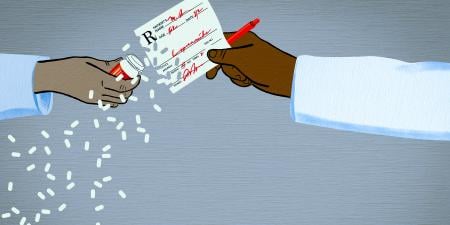Abstract
Because multiple Asian American and Pacific Islander (AAPI) communities in the United States have experienced historical trauma (HT), it is important to understand HT’s impact on the well-being of members of subsequent generations. This article addresses intergenerational trauma transmission, focusing primarily on Japanese American and Southeast Asian American communities. Research on these groups illuminates strategies for future empirical investigations of intergenerational trauma in other AAPI populations and suggests implications for care.
Historical Trauma and Health
Historical trauma (HT) is characterized as a traumatic event shared by a group of people that contributes to an increased prevalence of negative physical health outcomes, impaired parenting, distrust, and mental illness in subsequent generations.1 HT research has utilized both qualitative and quantitative methodology and began with a focus on the offspring of Nazi Holocaust survivors. Several of these earlier studies relied on clinical samples of survivors’ children, leading to the impression that their mental and behavioral health problems (eg, depression, anxiety, and disruptive behavior) stemmed from their parents’ Holocaust trauma.2,3,4 However, additional studies that utilized nonclinical samples and compared offspring whose parents did and did not experience the Holocaust failed to find increased pathology in survivors’ offspring.5,6,7 Investigators have also noted the importance of studying general resilience and specific vulnerabilities in families of Holocaust descendants.8 Although there is limited research on HT in Asian American and Pacific Islander (AAPI) communities, this paper highlights findings on this topic related to Japanese Americans and Southeast Asian Americans, the AAPI groups for which there is the most published research on this topic. Because there is a dearth of research examining the physical ramifications of HT in both these groups, we focus here on the psychological impacts. Our review elucidates subtle factors related to HT that can influence the well-being of AAPI patients and suggests that ethical treatment of patient needs can benefit from assessing possible factors related to HT beyond general family background. Although not discussed in this article, recent pandemic-related instances of anti-Asian harassment, discrimination, and violence have negatively targeted AAPI individuals. The increased sense of vulnerability and race-related stress associated with these events have the potential to retraumatize the AAPI community and can be included among these factors as well.
Japanese Americans
Soon after the Japanese military attacked Pearl Harbor, Hawaii, in 1941, the United States ordered all persons of Japanese ancestry from Western portions of the country to live in internment camps in remote areas.9 Falsely portrayed as potentially disloyal, men, women, and children—two-thirds of whom were US citizens—were interned for up to 4 years.9 Four decades later, the US government admitted this policy was based on false pretenses of national security and racial prejudice9 and paid reparations of $20 000 to surviving internees.10
These actions, however, did not address the impacts of HT on postwar third-generation Japanese American (Sansei) internee offspring. Lost businesses, land, and livelihoods during internment left few economic resources for Sansei to inherit.11 Some were deprived of a healthy parent. Survey data indicated that “former internees had a 2.1 greater risk of cardiovascular disease” than their noninternee counterparts,12 and a study of Sansei found that twice as many formerly interned fathers as noninterned fathers died before the age of 60.13 Large-scale surveys and in-depth interviews with Sansei also reveal the impacts of HT on family dynamics and parenting.13 Despite the trauma associated with internment, several researchers have observed that most Japanese American families were silent about what happened.13 In one study, many Sansei reported having had approximately 10 brief conversations in their lifetime with their parents about the “camps.”13 Parents avoided the topic altogether or spoke of it in curt or evasive ways. Some only discussed the internment to help their child do a school project.13 Attempting to protect their Sansei children from further targeting, former internees minimized or omitted the teaching of Japanese language and culture and urged their children to blend into mainstream American culture and achieve scholastically.13 In turn, Sansei experienced a loss of identity, family history, and a self-consciousness about their ethnicity.11,13,14,15,16 This struggle was exacerbated by insufficient coverage of the trauma in the broader society. For example, 2 analyses of history books published between 1988 and 1992 and between 2002 and 2003 that were used in public high school curricula found that the internment was justified solely in terms of national security with no mention of racism or discrimination,17 and, in the media in the 1960s, Japanese Americans were portrayed as a “model minority” that overcame the wartime experience.18
Over time, most Sansei learned on their own about the trauma through books, ethnic studies courses, and films.13,15 While the information helped close the gap in information that Sansei experienced growing up, survey data indicate that increased knowledge about the hardships suffered by their own parents and grandparents is associated with greater levels of sadness and anger.13,14 Knowledge about the internment also engenders distrust of the government: those who have a parent who had been interned are less confident about their rights in the United States than those for whom neither parent had been interned.13,14 Sansei are also, however, positively inspired by viewing their parents as role models of resilience. Some have been motivated to fulfill their parents’ lost dreams by pursuing the degree or career a parent had missed or by entering a legal career or community activism to prevent future injustices.12,13,14
Southeast Asian Americans
The severe traumas experienced by Southeast Asian (SEA) groups are also linked to HT transmission. Starting in 1975, the Pol Pot regime implemented the Cambodian genocide, which resulted in the deaths of 1.5 million individuals and over 100 000 US refugees.19 Life under the regime included starvation, forced labor, executions, destruction of property, and separation of families.19 In the same year, North Vietnam’s capture of Saigon signaled the end of the Vietnam war and the first surge of the Vietnamese refugee exodus to the United States.20 The ending of war was not the end of trauma for Vietnamese families, however; political repression, economic hardships, and warfare with other countries continued.20 By 1996, over 700 000 refugees had escaped to the United States.20 SEA refugees’ experiences in refugee camps prior to arriving in the United States also became a source of trauma.19,20
Despite internment trauma, several researchers observed that most Japanese American families were silent about what happened.
Findings are mixed regarding whether refugee parents’ exposure to trauma or symptoms of posttraumatic stress directly affect their children’s mental health and behavioral functioning.21,22,23 However, parents’ experience does seem to exert an indirect effect on their children’s health through various components of family dynamics, including parenting style, family functioning, parent-child engagement, and intergenerational communication.21,22,23 One study, for example, noted that observed patterns of severe anger episodes among Cambodian Americans receiving psychiatric treatment at a clinic were frequently directed toward children and associated with intergenerational conflicts that had elicited parents’ somatic trauma recall.24 As with Sansei, intergenerational communication about families’ trauma is a critical component of SEA youths’ experience of HT. Findings among young adults in Cambodian refugee families indicate that communication patterns vary widely—from complete silence, to partial avoidance, to open communication.25,26 These patterns could both positively and negatively affect (1) connectedness between offspring and parents and (2) offspring’s emotions. For example, open communication could either engender positive emotions in children in response to learning more about family history or emotionally overwhelm them.25,26 Like Sansei’s parents, sometimes SEA parents have only been willing to talk about their trauma with their children if it was needed for a school project.25,26 Also similar to the Sansei, SEA children face societal silence about their group’s HT, although they have had increased access to information via the internet.20,25,26
Similar to Japanese Americans, an emphasis on academic achievement and professional success as a means to security has been one impact of HT in SEA refugee families.20,27 However, both the Sansei offspring of internees and their internee parents were US-born, whereas immigrant SEA parents encountered posttrauma challenges of adjusting to the United States due to limited English facility and job opportunities, which contributed to low income, living in disadvantaged neighborhoods, and hardships in navigating American life.20,28,29,30 Unsurprisingly, then, their offspring have lower rates of educational attainment compared to other Asian groups and the general US population.27,31 Such findings caution against perceiving Asian American youth as a model minority generally and in the context of HT.
Future Research and Care
This brief review suggests the benefits of considering the impacts of HT in order to provide ethical assessment of and care for AAPI individuals and to promote future research. An understanding of the trauma that patients’ families and communities have experienced can help contextualize patients’ health problems and inform efforts to improve their health. Both clinicians and researchers are urged to:
- Investigate patients’ unique histories and characteristics related to HT when assessing the impacts of HT on well-being by adopting a historical perspective that considers when and where the group trauma occurred; the potential existence of multiple and varying types of trauma linked to historical events; the amount of time since the group trauma took place; and the developmental and social context of subsequent generations. Such a perspective can give researchers a more complete picture of the context of and factors contributing to HT.
- Assess the role of acculturation and cultural gaps in HT transmission, especially among children of immigrants. Such gaps have contributed to maladaptive mental and behavioral outcomes for children and poorer parent-child relationship quality,24,32,33 suggesting that they warrant consideration as potential mechanisms of HT.
- Consider the effect of mainstream society’s lack of awareness of AAPI traumas on patients’ ability to process their HT. Intrafamilial silence, combined with societal silence, may increase hesitancy to share concerns related to HT with health care professionals and may inhibit service utilization and treatment.
- Assess potential protective factors associated with HT, including the degree to which patients view the trauma and parents’ or ancestors’ resilience as a source of positive inspiration. Community-level factors might also facilitate resilience. For example, part of some Sansei’s resilience is attributable to being actively involved in the reparations movement, a form of collective activism comprising multiple generations and organizations.13
Researchers can also take the following steps:
- Take a developmental approach—particularly by including younger children, since studies including this group are lacking—to prospectively examine variation in HT effects across developmental stages.
- Investigate potential biological mechanisms of HT transmission in light of emerging findings on the role of epigenetic transmission of stress in Holocaust survivor families.34 Although previous studies have found that those who directly experienced the trauma (such as parents of Sansei,13,14 SEA refugee parents28) suffered physiological consequences, there is a dearth of literature examining the physical ramifications of HT on subsequent generations.
- Emphasize qualitative methodology. Prior AAPI studies have included quantitative measures (eg, the Harvard Trauma Questionnaire), but the research discussed in this review on Sansei and Southeast Asians indicates that qualitative methodology—specifically, in-depth interviews and open-ended questions—are beneficial in discerning nuanced impacts of HT not revealed by quantitative measures.
- Expand research on other AAPI groups’ experiences of HT. Preliminary research among Native Hawaiians and Sikh Americans exists,35,36 but more studies on these and other under-researched AAPI groups is needed.
Conclusion
Research on Japanese Americans and Southeast Asians has assessed potential impacts of HT on well-being and care considerations. Future investigations on this topic are needed to expand the depth and breadth of this work. These efforts should be undertaken bearing in mind the unique nature of trauma faced by different AAPI groups.
References
- Sotero MM. A conceptual model of historical trauma: implications for public health practice and research. J Health Dispar Res Pract. 2006;1(1):93-108.
- Axelrod S, Schnipper OL, Rau JH. Hospitalized offspring of Holocaust survivors: problems and dynamics. Bull Menninger Clin. 1980;44(1):1-14.
- Sigal JJ, Silver D, Rakoff V, Ellin B. Some second-generation effects of survival of the Nazi persecution. Am J Orthopsychiatry. 1973;43(3):320-327.
- Trossman B. Adolescent children of concentration camp survivors. Can Psychiatr Assoc J. 1968;13(2):121-123.
- Rose SL, Garske J. Family environment, adjustment, and coping among children of Holocaust survivors: a comparative investigation. Am J Orthopsychiatry. 1987;57(3):332-344.
- Kellerman NP. Psychopathology in children of Holocaust survivors: a review of the research literature. Isr J Psychiatry Relat Sci. 2001;38(1):36-46.
- van IJzendoorn MH, Bakermans-Kranenburg MJ, Sagi-Schwartz A. Are children of Holocaust survivors less well-adapted? A meta-analytic investigation of secondary traumatization. J Trauma Stress. 2003;16(5):459-469.
- Shmotkin D, Shrira A, Goldberg SC, Palgi Y. Resilience and vulnerability among aging Holocaust survivors and their families: an intergenerational overview. J Intergener Relatsh. 2011;9(1):7-21.
-
Commission on Wartime Relocation and Internment of Civilians. Personal justice denied part 2: recommendations. US Government Printing Office; 1983. Accessed April 14, 2021. https://www.archives.gov/files/research/japanese-americans/justice-denied/part-2-recommendations.pdf
-
Murray AY. Historical Memories of the Japanese American Internment and the Struggle for Redress. Stanford University Press; 2008.
- Nagata DK, Kim JHJ, Wu K. The Japanese American wartime incarceration: examining the scope of racial trauma. Am Psychol. 2019;74(1):36-48.
-
Jensen GM. The Experience of Injustice: Health Consequences of the Japanese American internment. Dissertation. University of Colorado; 1997.
-
Nagata DK. Legacy of Injustice: Exploring the Cross-generational Impact of the Japanese American Internment. Plenum Press; 1993.
-
Nagata DK, Patel RA. “Forever foreigners”: intergenerational impacts of historical trauma from the World War II Japanese American incarceration. In: Tummala-Narra P, ed. Trauma and Racial Minority Immigrants: Turmoil, Uncertainty, and Resistance. American Psychological Association Publishing; 2021:105-126.
-
Tsuda T. Japanese American Ethnicity: In Search of Heritage and Homeland Across Generations. New York University Press; 2016.
-
Spickard P. Japanese Americans: The Formation and Transformation of an Ethnic Group. Prentice Hall International; 1996.
- Ogawa M. The treatment of Japanese-American internment during World War II in United States history textbooks. Int J Soc Educ. 2004;19(1):35-47.
-
Petersen W. Success story, Japanese American style. New York Times. January 9, 1966. Accessed April 14, 2021. https://www.nytimes.com/1966/01/09/archives/success-story-japaneseamerican-style-success-story-japaneseamerican.html
-
Kiernan B. The Pol Pot Regime: Race, Power, and Genocide in Cambodia Under the Khmer Rouge, 1975-79. 2nd ed. Yale University Press; 2002.
-
Zhou M, Bankston CL III. Straddling Two Social Worlds: The Experience of Vietnamese Refugee Children in the United States. ERIC Clearinghouse on Urban Education; 2000. Urban Diversity Series 111. Accessed March 1, 2021. https://files.eric.ed.gov/fulltext/ED439180.pdf
- Field NP, Muong S, Sochanvimean V. Parental styles in the intergenerational transmission of trauma stemming from the Khmer Rouge regime in Cambodia. Am J Orthopsychiatry. 2013;83(4):483-494.
-
Sangalang CC, Jager J, Harachi TW. Effects of maternal traumatic distress on family functioning and child mental health: an examination of Southeast Asian refugee families in the US. Soc Sci Med. 2017;184:178-186.
- Spencer JH, Le TN. Parent refugee status, immigration stressors, and Southeast Asian youth violence. J Immigr Minor Health. 2006;8(4):359-368.
- Hinton DE, Rasmussen A, Nou L, Pollack MH, Good MJ. Anger, PTSD, and the nuclear family: a study of Cambodian refugees. Soc Sci Med. 2009;69(9):1387-1394.
- Lin NJ, Suyemoto KL, Kiang PNC. Education as catalyst for intergenerational refugee family communication about war and trauma. Commun Disord Q. 2009;30(4):195-207.
- Lin NJ, Suyemoto KL. So you, my children, can have a better life: a Cambodian American perspective on the phenomenology of intergenerational communication about trauma. J Aggress Maltreat Trauma. 2016;25(4):400-420.
-
Yang K. Southeast Asian American children: not the “model minority.” Future Child. 2004;14(2):127-133.
- Becker G, Beyene Y, Ken P. Memory, trauma, and embodied distress: the management of disruption in the stories of Cambodians in exile. Ethos. 2000;28(3):320-345.
-
Ong A. Buddha Is Hiding: Refugees, Citizenship, the New America. University of California Press; 2003. Borofsky R, ed. California Series in Public Anthropology; vol 5.
-
Rawlings LA, Capps R, Gentsch K, Fortuny K. Immigrant integration in low-income urban neighborhoods: improving economic prospects and strengthening connections for vulnerable families. Urban Institute; 2007. Accessed February 26, 2021. https://www.urban.org/sites/default/files/publication/46851/411574-Immigrant-Integration-in-Low-income-Urban-Neighborhoods.PDF
-
Yang NI, Dinh Q; Rise for Boys and Men of Color. Intergenerational trauma and Southeast Asian American Youth in California. Equal Measure; April 2018. Accessed July 12, 2020. http://www.equalmeasure.org/wp-content/uploads/2018/04/Rise_YangDinh_R1.pdf
- Ying YW, Han M. The longitudinal effect of intergenerational gap in acculturation on conflict and mental health in Southeast Asian American adolescents. Am J Orthopsychiatry. 2007;77(1):61-66.
- Dubus N. “I feel like her daughter not her mother”: ethnographic trans-cultural perspective of the experiences of aging for a group of Southeast Asian refugees in the United States. J Aging Stud. 2010;24(3):204-211.
- Lehrner A, Yehuda R. Cultural trauma and epigenetic inheritance. Dev Psychopathol. 2018;30(5):1763-1777.
- Pokhrel P, Herzog TA. Historical trauma and substance use among Native Hawaiian college students. Am J Health Behav. 2014;38(3):420-429.
- Devgan S. A haunted generation remembers. Contexts. 2018;17(4):36-41.



